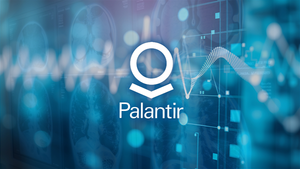
The global technology landscape is witnessing an unprecedented surge in semiconductor research and development (R&D) investments, a critical response to the insatiable demands of Artificial Intelligence (AI). Nations and corporations worldwide are pouring billions into advanced chip design, manufacturing, and innovative packaging solutions, recognizing semiconductors as the foundational bedrock for the next generation of AI capabilities. This monumental financial commitment, projected to push the global semiconductor market past $1 trillion by 2030, underscores a strategic imperative: to unlock the full potential of AI through specialized, high-performance hardware.
A notable development in this global race is the strategic emergence of Oman, which is actively positioning itself as a significant regional hub for semiconductor design. Through targeted investments and partnerships, the Sultanate aims to diversify its economy and contribute substantially to the global AI hardware ecosystem. These initiatives, exemplified by new design centers and strategic collaborations, are not merely about economic growth; they are about laying the essential groundwork for breakthroughs in machine learning, large language models, and autonomous systems that will define the future of AI.
The Technical Crucible: Forging AI's Future in Silicon
The computational demands of modern AI, from training colossal neural networks to processing real-time data for autonomous vehicles, far exceed the capabilities of general-purpose processors. This necessitates a relentless pursuit of specialized hardware accelerators, including Graphics Processing Units (GPUs) from companies like NVIDIA (NASDAQ: NVDA), Tensor Processing Units (TPUs), and custom Application-Specific Integrated Circuits (ASICs). Current R&D investments are strategically targeting several pivotal areas to meet these escalating requirements.
Key areas of innovation include the development of more powerful AI chips, focusing on enhancing parallel processing capabilities and energy efficiency. Furthermore, there's significant investment in advanced materials such as Wide Bandgap (WBG) semiconductors like Silicon Carbide (SiC) and Gallium Nitride (GaN), crucial for the power electronics required by energy-intensive AI data centers. Memory technologies are also seeing substantial R&D, with High Bandwidth Memory (HBM) customization experiencing explosive growth to cater to the data-intensive nature of AI applications. Novel architectures, including neuromorphic computing (chips inspired by the human brain), quantum computing, and edge computing, are redefining the boundaries of what's possible in AI processing, promising unprecedented speed and efficiency.
Oman's entry into this high-stakes arena is marked by concrete actions. The Ministry of Transport, Communications and Information Technology (MoTCIT) has announced a $30 million investment opportunity for a semiconductor design company in Muscat. Concurrently, ITHCA Group, the tech investment arm of Oman Investment Authority (OIA), has invested $20 million in Movandi, a US-based developer of semiconductor and smart wireless solutions, which includes the establishment of a design center in Oman. An additional Memorandum of Understanding (MoU) with AONH Private Holdings aims to develop an advanced semiconductor and AI chip project in the Salalah Free Zone. These initiatives are designed to cultivate local talent, attract international expertise, and focus on designing and manufacturing advanced AI chips, including high-performance memory solutions and next-generation AI applications like self-driving vehicles and AI training.
Reshaping the AI Industry: A Competitive Edge in Hardware
The global pivot towards intensified semiconductor R&D has profound implications for AI companies, tech giants, and startups alike. Companies at the forefront of AI hardware, such as NVIDIA (NASDAQ: NVDA), Intel (NASDAQ: INTC), and AMD (NASDAQ: AMD), stand to benefit immensely from these widespread investments. Enhanced R&D fosters a competitive environment that drives innovation, leading to more powerful, efficient, and cost-effective AI accelerators. This allows these companies to further solidify their market leadership by offering cutting-edge solutions essential for training and deploying advanced AI models.
For major AI labs and tech companies, the availability of diverse and advanced semiconductor solutions is crucial. It enables them to push the boundaries of AI research, develop more sophisticated models, and deploy AI across a wider range of applications. The emergence of new design centers, like those in Oman, also offers a strategic advantage by diversifying the global semiconductor supply chain. This reduces reliance on a few concentrated manufacturing hubs, mitigating geopolitical risks and enhancing resilience—a critical factor for companies like Taiwan Semiconductor Manufacturing Company (TSMC) (NYSE: TSM) and their global clientele.
Startups in the AI space can also leverage these advancements. Access to more powerful and specialized chips, potentially at lower costs due to increased competition and innovation, can accelerate their product development cycles and enable them to create novel AI-powered services. This environment fosters disruption, allowing agile newcomers to challenge existing products or services by integrating the latest hardware capabilities. Ultimately, the global semiconductor R&D boom creates a more robust and dynamic ecosystem, driving market positioning and strategic advantages across the entire AI industry.
Wider Significance: A New Era for AI's Foundation
The global surge in semiconductor R&D and manufacturing investment is more than just an economic trend; it represents a fundamental shift in the broader AI landscape. It underscores the recognition that software advancements alone are insufficient to sustain the exponential growth of AI. Instead, hardware innovation is now seen as the critical bottleneck and, conversely, the ultimate enabler for future breakthroughs. This fits into a broader trend of "hardware-software co-design," where chips are increasingly tailored to specific AI workloads, leading to unprecedented gains in performance and efficiency.
The impacts of these investments are far-reaching. Economically, they are driving diversification in nations like Oman, reducing reliance on traditional industries and fostering knowledge-based economies. Technologically, they are paving the way for AI applications that were once considered futuristic, from fully autonomous systems to highly complex large language models that demand immense computational power. However, potential concerns also arise, particularly regarding the energy consumption of increasingly powerful AI hardware and the environmental footprint of semiconductor manufacturing. Supply chain security remains a perennial issue, though efforts like Oman's new design center contribute to a more geographically diversified and resilient supply chain.
Comparing this era to previous AI milestones, the current focus on specialized hardware echoes the shift from general-purpose CPUs to GPUs for deep learning. Yet, today's investments go deeper, exploring novel architectures and materials, suggesting a more profound and multifaceted transformation. It signifies a maturation of the AI industry, where the foundational infrastructure is being reimagined to support increasingly sophisticated and ubiquitous AI deployments across every sector.
The Horizon: Future Developments in AI Hardware
Looking ahead, the ongoing investments in semiconductor R&D promise a future where AI hardware is not only more powerful but also more specialized and integrated. Near-term developments are expected to focus on further optimizing existing architectures, such as next-generation GPUs and custom AI accelerators, to handle increasingly complex neural networks and real-time processing demands more efficiently. We can also anticipate advancements in packaging technologies, allowing for denser integration of components and improved data transfer rates, crucial for high-bandwidth AI applications.
Longer-term, the horizon includes more transformative shifts. Neuromorphic computing, which seeks to mimic the brain's structure and function, holds the potential for ultra-low-power, event-driven AI processing, ideal for edge AI applications where energy efficiency is paramount. Quantum computing, while still in its nascent stages, represents a paradigm shift that could solve certain computational problems intractable for even the most powerful classical AI hardware. Edge AI, where AI processing happens closer to the data source rather than in distant cloud data centers, will benefit immensely from compact, energy-efficient AI chips, enabling real-time decision-making in autonomous vehicles, smart devices, and industrial IoT.
Challenges remain, particularly in scaling manufacturing processes for novel materials and architectures, managing the escalating costs of R&D, and ensuring a skilled workforce. However, experts predict a continuous trajectory of innovation, with AI itself playing a growing role in chip design through AI-driven Electronic Design Automation (EDA). The next wave of AI hardware will be characterized by a symbiotic relationship between software and silicon, unlocking unprecedented applications from personalized medicine to hyper-efficient smart cities.
A New Foundation for AI's Ascendance
The global acceleration in semiconductor R&D and innovation, epitomized by initiatives like Oman's strategic entry into chip design, marks a pivotal moment in the history of Artificial Intelligence. This concerted effort to engineer more powerful, efficient, and specialized hardware is not merely incremental; it is a foundational shift that will underpin the next generation of AI capabilities. The sheer scale of investment, coupled with a focus on diverse technological pathways—from advanced materials and memory to novel architectures—underscores a collective understanding that the future of AI hinges on the relentless evolution of its silicon brain.
The significance of this development cannot be overstated. It ensures that as AI models grow in complexity and data demands, the underlying hardware infrastructure will continue to evolve, preventing bottlenecks and enabling new frontiers of innovation. Oman's proactive steps highlight a broader trend of nations recognizing semiconductors as a strategic national asset, contributing to global supply chain resilience and fostering regional technological expertise. This is not just about faster chips; it's about creating a more robust, distributed, and innovative ecosystem for AI development worldwide.
In the coming weeks and months, we should watch for further announcements regarding new R&D partnerships, particularly in emerging markets, and the tangible progress of projects like Oman's design centers. The continuous interplay between hardware innovation and AI software advancements will dictate the pace and direction of AI's ascendance, promising a future where intelligent systems are more capable, pervasive, and transformative than ever before.
This content is intended for informational purposes only and represents analysis of current AI developments.
TokenRing AI delivers enterprise-grade solutions for multi-agent AI workflow orchestration, AI-powered development tools, and seamless remote collaboration platforms.
For more information, visit https://www.tokenring.ai/.





